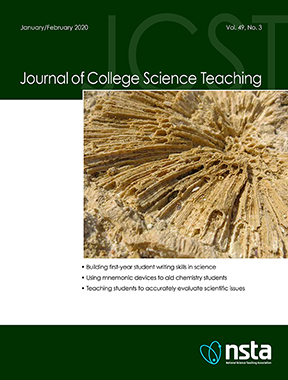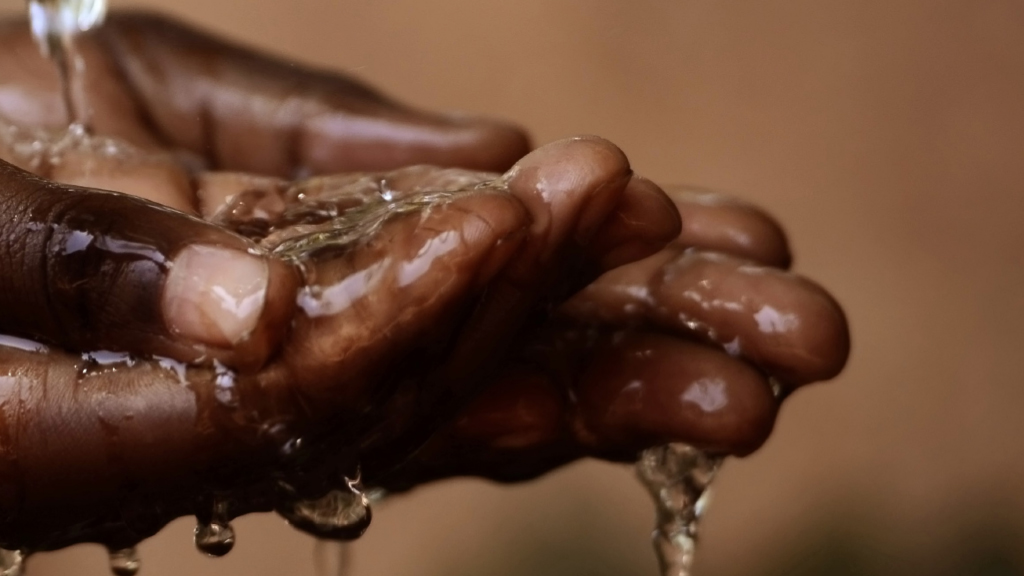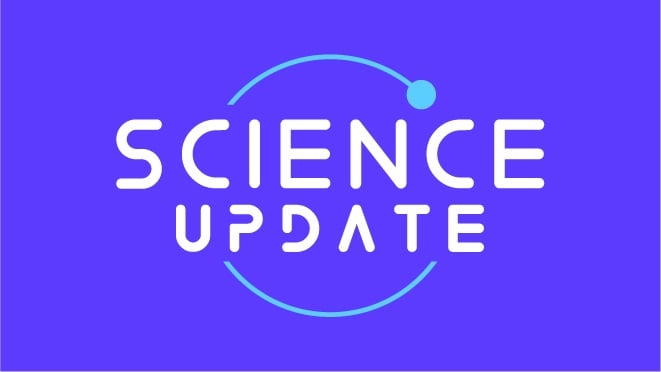
Volume 49, No. 3, January/February 2020

Volume 49, No. 3, January/February 2020

Volume 49, No. 3, January/February 2020
In this lesson, suggested for grades K-2, students learn about bee anatomy and behavior. They develop and test bee models to demonstrate their understanding of the interrelationships between plants and pollinators. After examining some of the controversies around bee decline, they also build a class mason bee hotel and develop educational bee posters to become advocates for the bees. This lesson promises to keep your students very buzzy!. Before beginning the lesson, we recommend reading Units I and IV, which are included in this book selection.
In this lesson, suggested for grades K-2, students learn about bee anatomy and behavior. They develop and test bee models to demonstrate their understanding of the interrelationships between plants and pollinators. After examining some of the controversies around bee decline, they also build a class mason bee hotel and develop educational bee posters to become advocates for the bees. This lesson promises to keep your students very buzzy!. Before beginning the lesson, we recommend reading Units I and IV, which are included in this book selection.
How Can We Provide Water for Developing Countries? 5E Unit Empowers Students to Solve the Global Water Crisis

Students use science knowledge and engineering skills to address a significant real-world problem.
Students use science knowledge and engineering skills to address a significant real-world problem.
Students use science knowledge and engineering skills to address a significant real-world problem.
This chapter provides recommendations for translating standards into instructional materials that are usable for those with the real task of teaching. The discussion provides an affirmative answer to the question: How can the BSCS 5E Instructional Model be used to implement the Next Generation Science Standards (NGSS)? The chapter draws on insights the author gained during his work on both the National Science Education Standards (NRC 1996) and the NGSS (NGSS Lead States 2013).
This chapter provides recommendations for translating standards into instructional materials that are usable for those with the real task of teaching. The discussion provides an affirmative answer to the question: How can the BSCS 5E Instructional Model be used to implement the Next Generation Science Standards (NGSS)? The chapter draws on insights the author gained during his work on both the National Science Education Standards (NRC 1996) and the NGSS (NGSS Lead States 2013).
Click here to view video of Dear Ms. Guadalupe: Letters to My Librarian
Click here to view video of Dear Ms. Guadalupe: Letters to My Librarian
Two young explorers embark on an exciting journey in search of the perfect planet. As they travel through outer space, they discover and visit incredible exoplanets—from scorching gas giants to mini-Neptunes—that exist beyond our solar system. Along the way, these space travelers learn what makes our planet, Earth, unique and special. Ideal for grades 1–4, The Perfect Planet will spark imaginations, build science literacy, and inspire kids to care for the incredible planet we call home—Earth!
Two young explorers embark on an exciting journey in search of the perfect planet. As they travel through outer space, they discover and visit incredible exoplanets—from scorching gas giants to mini-Neptunes—that exist beyond our solar system. Along the way, these space travelers learn what makes our planet, Earth, unique and special. Ideal for grades 1–4, The Perfect Planet will spark imaginations, build science literacy, and inspire kids to care for the incredible planet we call home—Earth!
The Perfect Planet
Two young explorers embark on an exciting journey in search of the perfect planet. As they travel through outer space, they discover and visit incredible exoplanets—from scorching gas giants to mini-Neptunes—that exist beyond our solar system. Along the way, these space travelers learn what makes our planet, Earth, unique and special. Ideal for grades 1–4, The Perfect Planet will spark imaginations, build science literacy, and inspire kids to care for the incredible planet we call home—Earth!
Two young explorers embark on an exciting journey in search of the perfect planet. As they travel through outer space, they discover and visit incredible exoplanets—from scorching gas giants to mini-Neptunes—that exist beyond our solar system. Along the way, these space travelers learn what makes our planet, Earth, unique and special. Ideal for grades 1–4, The Perfect Planet will spark imaginations, build science literacy, and inspire kids to care for the incredible planet we call home—Earth!
Mineral Resources for our Future, October 16, 2025
 Join us on Thursday, October 16, 2025, from 7:00 PM to 8:00 PM ET, to celebrate Earth Week with NSTA by learning about mineral resources.
Join us on Thursday, October 16, 2025, from 7:00 PM to 8:00 PM ET, to celebrate Earth Week with NSTA by learning about mineral resources.
 Join us on Thursday, October 16, 2025, from 7:00 PM to 8:00 PM ET, to celebrate Earth Week with NSTA by learning about mineral resources.
Join us on Thursday, October 16, 2025, from 7:00 PM to 8:00 PM ET, to celebrate Earth Week with NSTA by learning about mineral resources.
 Join us on Thursday, October 16, 2025, from 7:00 PM to 8:00 PM ET, to celebrate Earth Week with NSTA by learning about mineral resources.
Join us on Thursday, October 16, 2025, from 7:00 PM to 8:00 PM ET, to celebrate Earth Week with NSTA by learning about mineral resources.
 Join us on Thursday, October 16, 2025, from 7:00 PM to 8:00 PM ET, to celebrate Earth Week with NSTA by learning about mineral resources.
Join us on Thursday, October 16, 2025, from 7:00 PM to 8:00 PM ET, to celebrate Earth Week with NSTA by learning about mineral resources.


